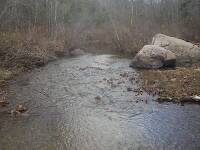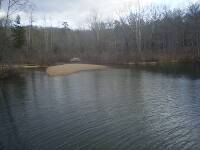
Blue-winged Olives
Baetis
Tiny Baetis mayflies are perhaps the most commonly encountered and imitated by anglers on all American trout streams due to their great abundance, widespread distribution, and trout-friendly emergence habits.
Featured on the forum

This one was surprisingly straightforward to identify. The lack of a sclerite at the base of the lateral hump narrows the field quite a bit, and the other options followed fairly obvious characteristics to Clostoeca, which only has one species, Clostoeca disjuncta.

Troutnut is a project started in 2003 by salmonid ecologist Jason "Troutnut" Neuswanger to help anglers and
fly tyers unabashedly embrace the entomological side of the sport. Learn more about Troutnut or
support the project for an enhanced experience here.
Shawnny3 on Apr 22, 2009April 22nd, 2009, 1:57 pm EDT
Jewelry-Quality Artistic Salmon Flies, by Shawn Davis
www.davisflydesigns.com
www.davisflydesigns.com
Taxon on Apr 22, 2009April 22nd, 2009, 6:53 pm EDT
Hmmm. Perhaps these "scientists" should try going upstream until they are no longer finding smallmouth bass which display this anomaly. Mostly kidding, of course.
Shawnny3 on Apr 23, 2009April 23rd, 2009, 12:26 am EDT
Well put, Roger. I would hope they'd have thought of that, but the article does make them seem a little bumbling, doesn't it? Hopefully that's just the layman's media oversimplifying their research. The article does have a certain why-are-you-telling-us-what-you-don't-know sort of humorous tone, though.
If they do go long enough without finding a likely cause, they could always just hazard a guess that it's CO2. That would settle the issue in the minds of most and ensure lots of future funding...
-Shawn
If they do go long enough without finding a likely cause, they could always just hazard a guess that it's CO2. That would settle the issue in the minds of most and ensure lots of future funding...
-Shawn
Jewelry-Quality Artistic Salmon Flies, by Shawn Davis
www.davisflydesigns.com
www.davisflydesigns.com
Quick Reply
Related Discussions
Topic
Replies
Last Reply
4
Nov 17, 2011
by Jmd123
by Jmd123







